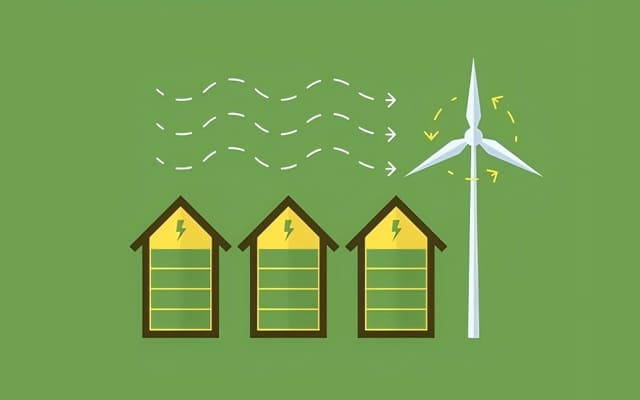A Complete Guide to Wind Generator Cut-in, Rated, Cut-out, and Survival Wind Speeds
Contrary to common belief, wind power doesn’t require extremely strong wind. A wind generator operates efficiently only within a specific wind speed range. If the wind is too weak, it won’t start; if it’s too strong, it must stop to avoid damage.
In this article, we explain the four key wind speed levels that determine when a wind turbine starts working, produces full power, stops, and how much wind it can survive.
1. Cut-in Wind Speed – The Minimum Wind Speed for a Wind Generator to Start
The cut-in speed refers to the minimum wind speed required for the wind generator to begin producing power.
-
Typical values: Most wind generators have a cut-in speed around 3 m/s, with some models starting at 2.5 m/s, and others needing up to 3.5 m/s. This corresponds to a Level 2 breeze (1.6–3.3 m/s at 10 meters).
-
Height matters: These measurements are taken at the hub height (usually 70–200 meters), not at ground level. Wind speed at higher altitudes is generally stronger.
-
Stable wind required: The wind must remain steady for at least 10 minutes. Inconsistent gusts are not enough to trigger operation.
2. Rated Wind Speed – The Optimal Wind Speed for Full Power Output
When wind speed increases to a certain point, the wind generator reaches its maximum output.
-
Rated wind speed: Typically between 9 and 11 m/s, equivalent to Level 5 wind (8.0–10.7 m/s at 10 meters).
-
Full power generation: Once the wind reaches this level at hub height, the wind turbine delivers its rated output.
-
Measurement: This is based on the instantaneous wind speed at hub height.
3. Cut-out Wind Speed – When the Wind Generator Stops for Safety
Too much wind can damage the equipment. That’s why wind generators are designed to stop under extreme wind conditions.
-
Cut-out range: Usually between 20–25 m/s, corresponding to Level 9 wind (20.8–24.4 m/s at 10 meters).
-
Reason for stopping: To protect internal components from overloading or mechanical failure.
-
Trigger condition: Cut-out is based on the 10-minute average wind speed at hub height—not a brief gust.
4. Survival Wind Speed – The Maximum Wind a Wind Generator Can Withstand
This is the structural limit beyond which the wind generator may be seriously damaged.
-
Standard durability: Most wind generators can withstand 45–50 m/s, or Level 15 wind (46.2–50.9 m/s at 10 meters).
-
High-performance models: In coastal or offshore regions, specially designed wind generators can survive up to 70 m/s, or Level 17 wind, thanks to reinforced materials.
-
Measurement: Survival speed refers to instantaneous wind speed at hub height.
Final Summary: Wind Speed vs. Wind Generator Performance
✅ Level 2 wind (~3 m/s) is enough to start generating
✅ Level 5 wind (9–11 m/s) enables full power output
❌ Level 9 wind (20–25 m/s) causes automatic shutdown
⚠️ Level 15+ wind (45+ m/s) approaches structural limits
A wind generator doesn’t need extreme weather. What it really needs is consistent, moderate wind. Understanding these wind speed thresholds helps ensure that your wind generator operates safely and efficiently for years to come.

